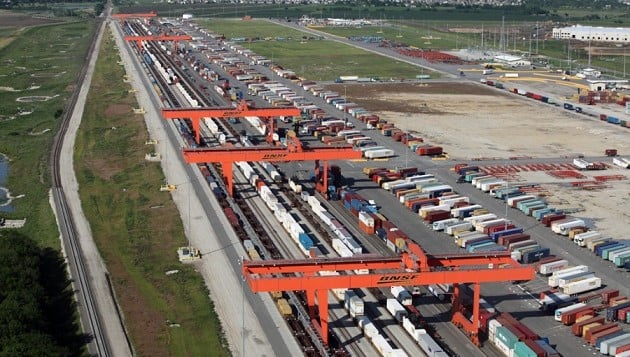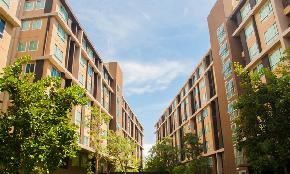 BNSF’s Logistics Park Kansas City; Amazon recently agreed to occupy a new 822K speculative building here.
BNSF’s Logistics Park Kansas City; Amazon recently agreed to occupy a new 822K speculative building here.
CHICAGO—The US industrial markets just had another historic year, with record-setting levels of absorption and vacancy, and experts say these good times should last at least through the end of 2017. Tenants absorbed 63.6 million square feet of space in the final quarter of 2016, which propelled net absorption for the year to 282.9 million square feet, according to a new year-end report from Cushman & Wakefield. The national vacancy rate for all product types continued to decline in the fourth quarter, falling 30 bps from the prior quarter and 100 bps from the prior year to 5.5%.
As of January 2017, the industrial sector has registered 27 consecutive quarters of net occupancy gains, placing this expansion among the longest ever. It is also among the strongest, with 825.5 million square feet of net absorption for the past three years, far surpassing the 726.8 million square feet absorbed from 1997 to 1999, the strongest period of occupancy growth in the prior cycle.
But the remarkable level of activity during the past few years can’t be fully explained by the usual ebbs and flows of the economy.
“We are in the midst of a modest and stable recovery,” John Morris, executive managing director of logistics and industrial services at Cushman & Wakefield, tells GlobeSt.com, and in normal times that would mean a slow expansion of the industrial market. “But what makes this market special, and record-setting, is the conversion of retail space, net, into industrial space, net.”
The rise of e-commerce, and the construction of distribution centers to serve that consumer demand, has been noted for several years, along with the subsequent decline of brick-and-mortar stores. But several recent decisions to close outlets, especially from Macy’s, The Limited, and even Walmart, has illustrated that these changes will alter the retail landscape to a far greater extent than once believed.
“Stores are going to have to play a different role,” says Morris. He does not look on this as a doom-and-gloom scenario, even though by the middle of 2017, observers may become numb to the steady announcement of store closures. “This is not about the demise of retail or the decline of the economy, it’s just a change in the platform.”
More retailers have realized they need to remake their supply chains and speed the direct delivery of products to consumers. Amazon has, of course, become the major player in this sector, but 3PL providers are also on the rise, and it shows. Over the past year, logistics-related warehouse vacancy has declined 130 bps, from 6.9% to 5.6%, despite the delivery of 156.8 million square feet of new speculative product.
Morris adds that in the past four years the demand for new space has outstripped the level of new construction, and that has fueled significant rent growth. But the current level of construction activity should finally bring supply and demand into a fairly reasonable balance, and in 2017 rent growth will probably flatten.
But that also means the industrial expansion will continue. And as long as no so-called “black swan” events occur in the US economy or on the international scene, Morris expects to see in 2017 yet another “record or near-record year in industrial absorption.”

















 Copyright © 2024 ALM Global, LLC. All Rights Reserved.
Copyright © 2024 ALM Global, LLC. All Rights Reserved.